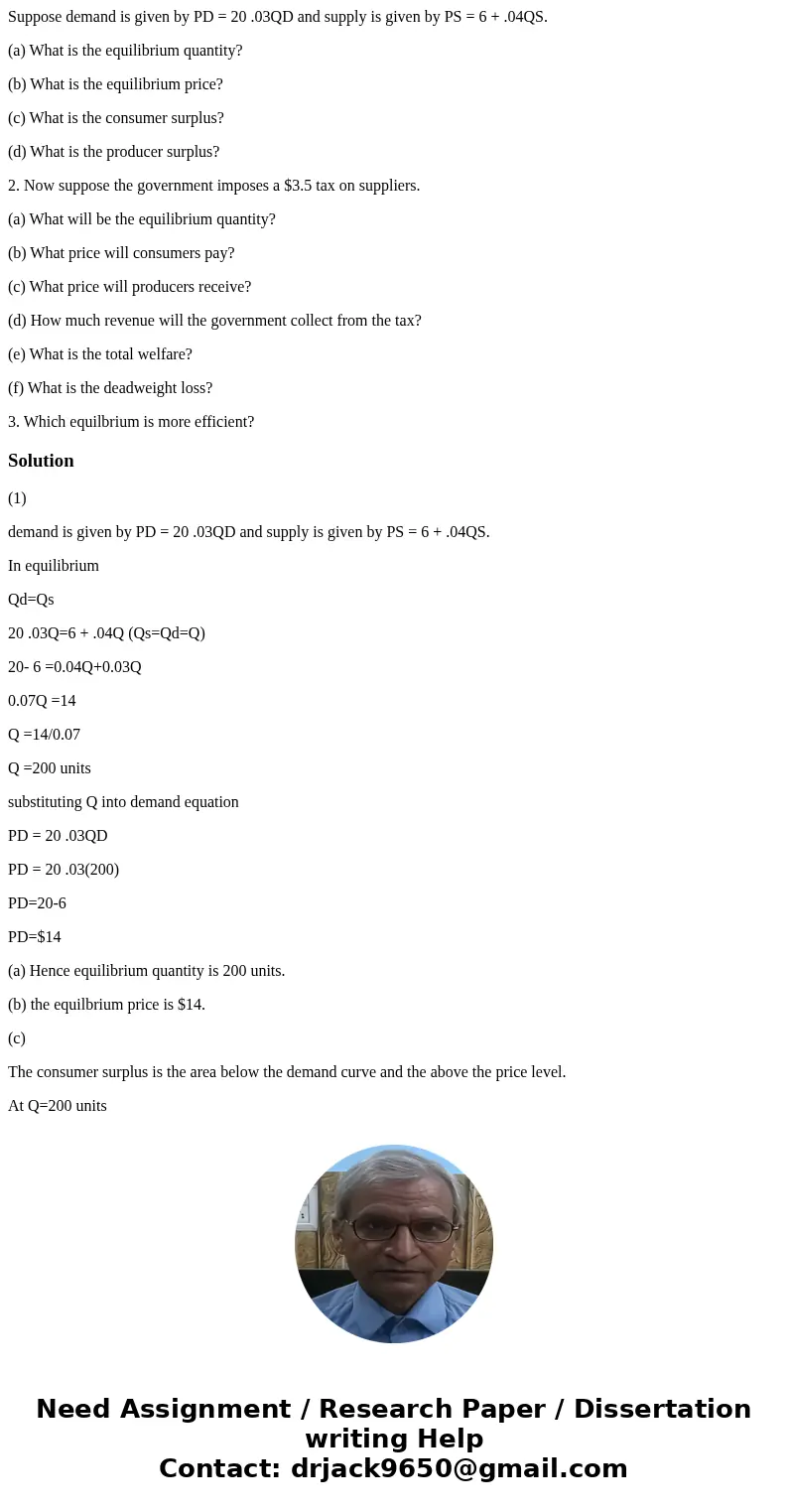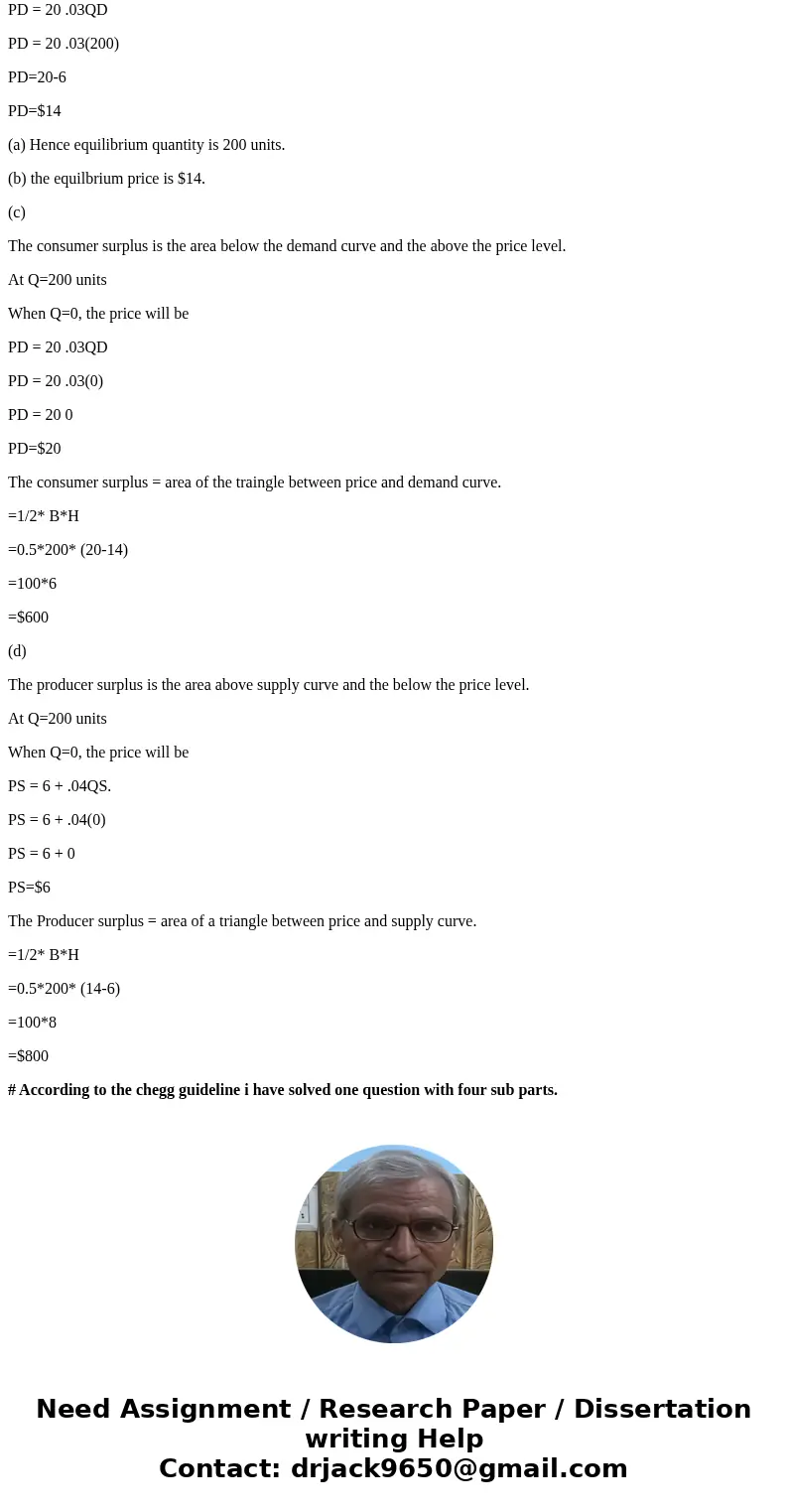Suppose demand is given by PD 20 03QD and supply is given b
Suppose demand is given by PD = 20 .03QD and supply is given by PS = 6 + .04QS.
(a) What is the equilibrium quantity?
(b) What is the equilibrium price?
(c) What is the consumer surplus?
(d) What is the producer surplus?
2. Now suppose the government imposes a $3.5 tax on suppliers.
(a) What will be the equilibrium quantity?
(b) What price will consumers pay?
(c) What price will producers receive?
(d) How much revenue will the government collect from the tax?
(e) What is the total welfare?
(f) What is the deadweight loss?
3. Which equilbrium is more efficient?
Solution
(1)
demand is given by PD = 20 .03QD and supply is given by PS = 6 + .04QS.
In equilibrium
Qd=Qs
20 .03Q=6 + .04Q (Qs=Qd=Q)
20- 6 =0.04Q+0.03Q
0.07Q =14
Q =14/0.07
Q =200 units
substituting Q into demand equation
PD = 20 .03QD
PD = 20 .03(200)
PD=20-6
PD=$14
(a) Hence equilibrium quantity is 200 units.
(b) the equilbrium price is $14.
(c)
The consumer surplus is the area below the demand curve and the above the price level.
At Q=200 units
When Q=0, the price will be
PD = 20 .03QD
PD = 20 .03(0)
PD = 20 0
PD=$20
The consumer surplus = area of the traingle between price and demand curve.
=1/2* B*H
=0.5*200* (20-14)
=100*6
=$600
(d)
The producer surplus is the area above supply curve and the below the price level.
At Q=200 units
When Q=0, the price will be
PS = 6 + .04QS.
PS = 6 + .04(0)
PS = 6 + 0
PS=$6
The Producer surplus = area of a triangle between price and supply curve.
=1/2* B*H
=0.5*200* (14-6)
=100*8
=$800
# According to the chegg guideline i have solved one question with four sub parts.


 Homework Sourse
Homework Sourse